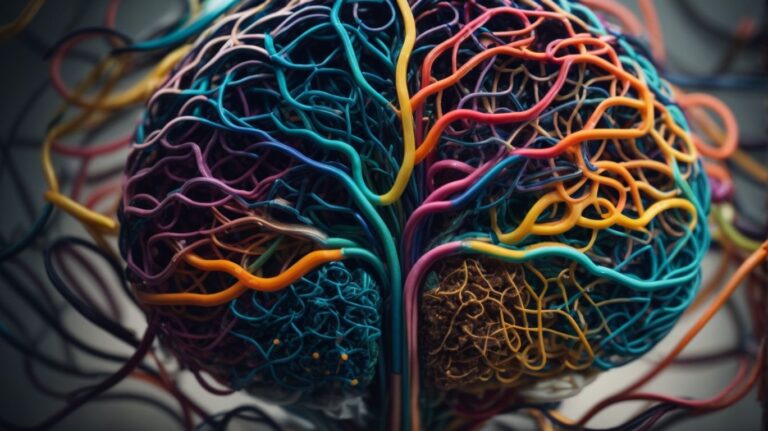Curious about the concept of ‘unconditioned’ in psychology? This article will explore the various types of conditioning in psychology, including classical and operant conditioning. We will delve into what unconditioned stimulus and unconditioned response are, and how they play a role in conditioning.
We will discuss the differences between unconditioned and conditioned stimulus, as well as unconditioned and conditioned response. Examples of unconditioned in psychology, its relationship to behaviorism, criticisms, and its application in psychology treatment will also be covered.
Stay tuned to unravel the mysteries of ‘unconditioned’ in psychology!
Contents
- 1 What Is ‘Unconditioned’ in Psychology?
- 2 What Are the Types of Conditioning in Psychology?
- 3 What Is Unconditioned Stimulus?
- 4 What Is Unconditioned Response?
- 5 What Is the Role of Unconditioned Stimulus and Unconditioned Response in Conditioning?
- 6 What Is the Difference Between Unconditioned and Conditioned Stimulus?
- 7 What Is the Difference Between Unconditioned and Conditioned Response?
- 8 How Is Unconditioned Used in Psychology Experiments?
- 9 What Are Some Examples of Unconditioned in Psychology?
- 10 How Does Unconditioned Relate to the Theory of Behaviorism?
- 11 What Are the Criticisms of Using Unconditioned in Psychology?
- 12 How Can Understanding Unconditioned Help in Psychology Treatment?
- 13 Frequently Asked Questions
- 13.1 What does ‘unconditioned’ mean in the context of psychology?
- 13.2 Can you provide an example of an ‘unconditioned’ stimulus?
- 13.3 What is the opposite of ‘unconditioned’ in psychology?
- 13.4 How is ‘unconditioned’ different from ‘conditioned’ in psychology?
- 13.5 What is the role of ‘unconditioned’ stimuli in classical conditioning?
- 13.6 Can ‘unconditioned’ stimuli ever become ‘conditioned’ stimuli?
What Is ‘Unconditioned’ in Psychology?
In psychology, the term ‘unconditioned’ refers to a type of stimulus or response that occurs naturally and does not require prior learning or conditioning.
This concept plays a crucial role in classical conditioning, pioneered by Ivan Pavlov. Within this framework, unconditioned stimuli trigger unconditioned responses without any prior association. For instance, the smell of food (unconditioned stimulus) leading to salivation (unconditioned response) in Pavlov’s famous experiments showcases the innate nature of these reactions.
Understanding unconditioned responses is fundamental to behavioral psychology as they illustrate how organisms naturally react to specific stimuli, laying the groundwork for more complex learned behaviors through conditioning processes.
What Are the Types of Conditioning in Psychology?
Conditioning in psychology encompasses two main types: classical conditioning and operant conditioning, each involving different mechanisms of learning and behavioral responses.
In classical conditioning, a neutral stimulus becomes associated with a meaningful stimulus, leading to a conditioned response. This process was famously demonstrated by Pavlov’s experiments with dogs, where they learned to salivate at the sound of a bell due to its association with food. On the other hand, operant conditioning focuses on the consequences of behavior, where reinforcement or punishment shapes the likelihood of that behavior recurring. These principles are widely applied in behavior modification strategies, helping individuals learn new behaviors or eliminate unwanted ones through positive or negative reinforcements.
Classical Conditioning
Classical conditioning, pioneered by Ivan Pavlov, involves associating a neutral stimulus with an unconditioned stimulus to elicit a conditioned response, as demonstrated in Pavlov’s famous salivation experiment.
Ivan Pavlov’s groundbreaking work on classical conditioning revolutionized the understanding of how associations between stimuli can influence behavior. The process typically involves presenting a neutral stimulus alongside an unconditioned stimulus that naturally produces a reflexive response. Through repeated pairings, the neutral stimulus becomes a conditioned stimulus, leading to the elicitation of a conditioned response. This process of association forms the basis of classical conditioning.
Pavlov’s salivation experiment with dogs exemplifies this concept vividly. By ringing a bell before feeding the dogs, eventually, the sound of the bell alone triggered salivation in anticipation of food, demonstrating the learned association between the bell (neutral stimulus) and food (unconditioned stimulus).
Operant Conditioning
Operant conditioning, a key concept in behavioral psychology, involves modifying behavior through reinforcement or punishment based on the timing and acquisition of responses.
Reinforcement plays a crucial role in operant conditioning by either increasing the likelihood of a behavior being repeated or extinguished. Positive reinforcement involves adding a stimulus to encourage a desired behavior, while negative reinforcement involves removing a stimulus to achieve the same outcome. Timing of responses is essential in operant conditioning as the reinforcement should closely follow the desired behavior to be effective. Through consistent reinforcement schedules and gradual shaping of behaviors, individuals can acquire and master new skills or habits. This process forms the foundation of behavior modification techniques in psychology.
What Is Unconditioned Stimulus?
An unconditioned stimulus is a stimulus that naturally triggers a reflexive response without the need for prior learning or association.
When an individual encounters an unconditioned stimulus, such as a puff of air causing the eye to blink, the reflexive response occurs instinctively and involuntarily. This stimulus directly prompts a specific behavior or reaction, showcasing the connection between the external stimulus and the automatic response it evokes. Throughout evolution, these innate behaviors have been crucial for survival, ensuring rapid and appropriate reactions to potential threats or opportunities in the environment. Understanding the role of unconditioned stimuli in triggering reflexes provides valuable insights into the biological mechanisms that drive fundamental behaviors.”
What Is Unconditioned Response?
An unconditioned response is an innate and automatic reaction to an unconditioned stimulus, typically a reflexive behavior that occurs naturally.
Unconditioned responses are essential components of the classical conditioning process, illustrating the involuntary nature of certain behaviors. These responses are not learned, but rather, they are triggered by the presentation of specific unconditioned stimuli. For example, the sound of a bell causing a dog to salivate is a classic illustration of this concept. The conditioned stimulus in this scenario would be the bell, while the unconditioned stimulus would be the food that naturally triggers the salivation response in the dog.
What Is the Role of Unconditioned Stimulus and Unconditioned Response in Conditioning?
The unconditioned stimulus and unconditioned response play pivotal roles in conditioning by forming associations that facilitate the learning process of acquiring new behaviors.
When an organism encounters a unconditioned stimulus that naturally triggers a response, such as the smell of food leading to salivation, a connection is made in the brain between the stimulus and the response. This connection forms the basis for classical conditioning. Through repeated pairings of the unconditioned stimulus with a neutral stimulus, such as a bell, the neutral stimulus eventually elicits the same response as the original unconditioned stimulus.
This process, known as acquisition, involves the gradual learning of the conditioned response through the association between the conditioned stimulus and the unconditioned stimulus. Over time, the organism learns to anticipate the occurrence of the unconditioned stimulus when presented with the conditioned stimulus, demonstrating the acquisition of a conditioned behavior.
What Is the Difference Between Unconditioned and Conditioned Stimulus?
The key distinction between unconditioned and conditioned stimuli lies in their inherent properties: unconditioned stimuli naturally evoke responses, while conditioned stimuli acquire their significance through association.
Unconditioned stimuli are those that trigger reflexive or involuntary responses without any prior learning or associations. Common examples include food for hunger, pain for withdrawal, or loud noises for startle reactions. In contrast, conditioned stimuli are initially neutral stimuli that become associated with unconditioned stimuli through repeated pairings. This association leads to the conditioned stimuli eventually eliciting similar responses as the unconditioned stimuli, creating a learned reflex or behavior.
What Is the Difference Between Unconditioned and Conditioned Response?
Unconditioned responses are reflexive reactions to unconditioned stimuli, while conditioned responses are learned behaviors resulting from associations with conditioned stimuli.
Unconditioned responses are instinctual, automatic reactions that occur naturally without prior experience or learning. They are typically linked to survival instincts or basic physiological processes, such as blinking when a foreign object approaches the eye or flinching in response to sudden loud noises.
Conditioned responses, on the other hand, are acquired through repeated pairing of a neutral stimulus with an unconditioned stimulus. This process forms associations in the brain, leading to the development of a new response to the previously neutral stimulus.
Understanding the disparities between these types of responses is crucial in the realm of behavioral conditioning, where reinforcement and extinction play pivotal roles in shaping behavior patterns.
How Is Unconditioned Used in Psychology Experiments?
Unconditioned stimuli and responses are integral components of psychology experiments, particularly in behaviorism, where they are manipulated to study associative learning and behavioral responses.
In behaviorism, unconditioned stimuli are natural stimuli that elicit a reflexive response without prior conditioning, such as food causing salivation. These stimuli play a vital role in experimental design, as researchers can pair them with neutral stimuli to observe how new associations are formed. For example, in Pavlov’s classical conditioning experiments, the unconditioned stimulus was the food, while the unconditioned response was the dog’s salivation. Understanding the role of unconditioned elements helps researchers delve deeper into the study of learning processes and behavior modification.
What Are Some Examples of Unconditioned in Psychology?
Examples of unconditioned responses in psychology include emotional reactions like fear, which are triggered automatically by certain stimuli without prior conditioning or learning.
In the world of psychology, unconditioned responses are fascinating examples of how our minds and bodies react instinctively to external triggers. When an individual encounters a spider crawling on their arm, the immediate shiver, increased heart rate, and the impulse to swat it away represent fear as an unconditioned response. Similarly, the reflex to flinch or recoil when feeling a sudden cold sensation on the skin showcases the innate nature of these responses.
Such instantaneous reactions are deeply rooted in our psychological and biological makeup, often originating from our ancestors’ survival instincts. For instance, the automatic jump and heightened alertness in response to a loud unexpected noise can be traced back to our primal need to protect ourselves from potential dangers in the environment.
How Does Unconditioned Relate to the Theory of Behaviorism?
The concept of unconditioned responses is foundational to the theory of behaviorism, as demonstrated by the pioneering works of Ivan Pavlov and John B. Watson in studying associative learning and reflexive behaviors.
Unconditioned responses, also known as unconditioned reflexes, are innate and automatic reactions that are not acquired through learning but are instead natural responses to specific stimuli. These responses form the basis for classical conditioning, a fundamental principle in behaviorism.
Ivan Pavlov’s famous experiments with dogs, where he observed salivation as an unconditioned response to the presentation of food, laid the groundwork for understanding the process of conditioning. Likewise, John B. Watson’s research on behaviorism emphasized the importance of observable behaviors and the environment in shaping an individual’s responses.
What Are the Criticisms of Using Unconditioned in Psychology?
Critics of employing unconditioned stimuli in psychology research raise concerns about the validity of findings, the editorial process of curated articles, and the need for robust sources to ensure accurate representation.
Research validity is a fundamental aspect of any scientific study, and critics argue that the use of unconditioned stimuli may introduce bias or confounding variables that could undermine the accuracy of the results. Concerns are raised about the editorial standards employed in publishing these findings. Critics suggest that some articles may prioritize sensationalism over scientific rigor, leading to a misrepresentation of data within the academic community. The reliability of sources utilized in studies incorporating unconditioned elements is questioned. Inadequate or questionable sources may compromise the integrity and credibility of the research.
How Can Understanding Unconditioned Help in Psychology Treatment?
A comprehensive grasp of unconditioned responses can aid in psychology treatment by elucidating the roots of emotional reactions, like fear, and enabling targeted interventions based on associative learning principles.
Understanding the unconditioned aspects of a patient’s emotional responses provides therapists with invaluable insights into the underlying triggers that fuel their psychological distress.
By looking into the unconditioned responses associated with *fear*, therapists can devise personalized treatment plans that address these core issues effectively. This approach allows for a more nuanced and tailored intervention strategy that accounts for the unique emotional makeup of each individual.
Through recognizing and parsing unconditioned elements within emotional responses, therapists can forge stronger connections with their clients and navigate the complexities of various emotional disorders more adeptly.
Frequently Asked Questions
What does ‘unconditioned’ mean in the context of psychology?
ANSWER: In psychology, ‘unconditioned’ refers to a stimulus or response that is innate and does not require any prior learning or conditioning.
Can you provide an example of an ‘unconditioned’ stimulus?
ANSWER: Yes, a common example of an ‘unconditioned’ stimulus is food, which naturally elicits a physiological response of hunger in most organisms.
What is the opposite of ‘unconditioned’ in psychology?
ANSWER: The opposite of ‘unconditioned’ is ‘conditioned’, which refers to a stimulus or response that has been learned or acquired through conditioning.
How is ‘unconditioned’ different from ‘conditioned’ in psychology?
ANSWER: While ‘unconditioned’ refers to a natural, innate stimulus or response, ‘conditioned’ refers to a learned or acquired stimulus or response that has been paired with a ‘unconditioned’ stimulus.
What is the role of ‘unconditioned’ stimuli in classical conditioning?
ANSWER: ‘Unconditioned’ stimuli play a crucial role in classical conditioning as they are the naturally occurring stimuli that elicit an ‘unconditioned’ response, which can then be paired with a ‘conditioned’ stimulus to create a learned response.
Can ‘unconditioned’ stimuli ever become ‘conditioned’ stimuli?
ANSWER: Yes, under certain circumstances, ‘unconditioned’ stimuli can become ‘conditioned’ stimuli through a process known as higher-order conditioning, where a new stimulus is paired with an already established ‘conditioned’ stimulus.



